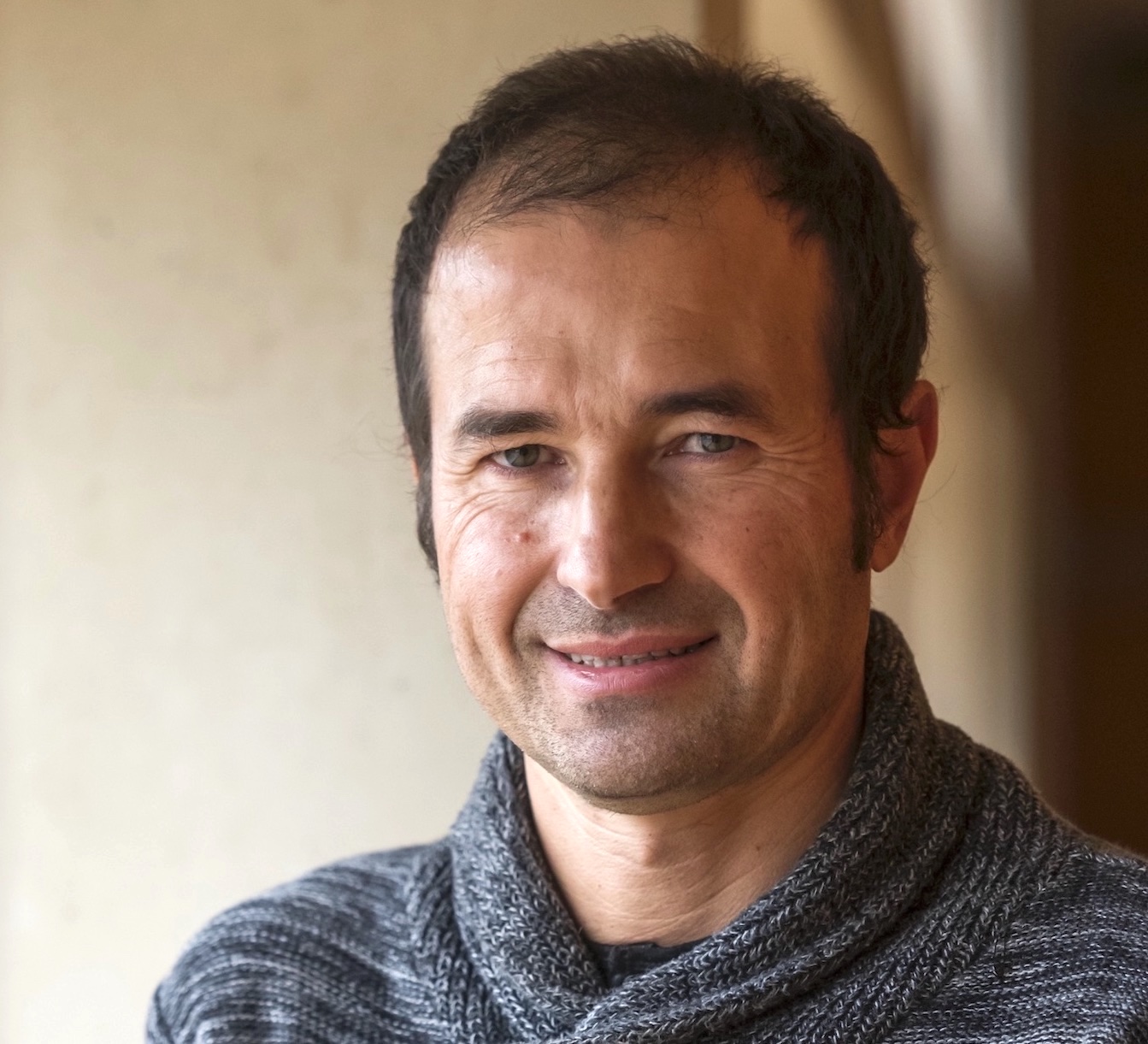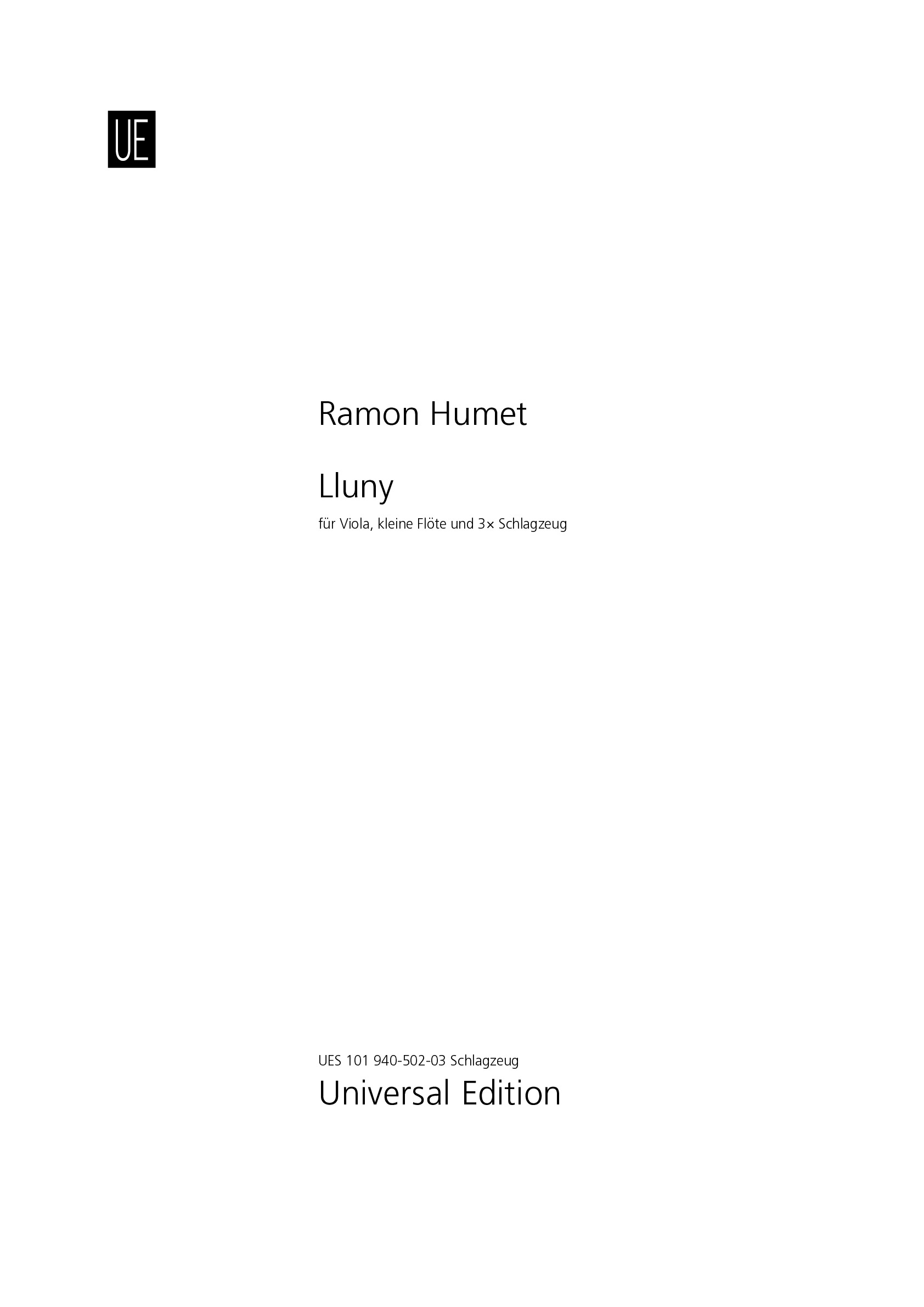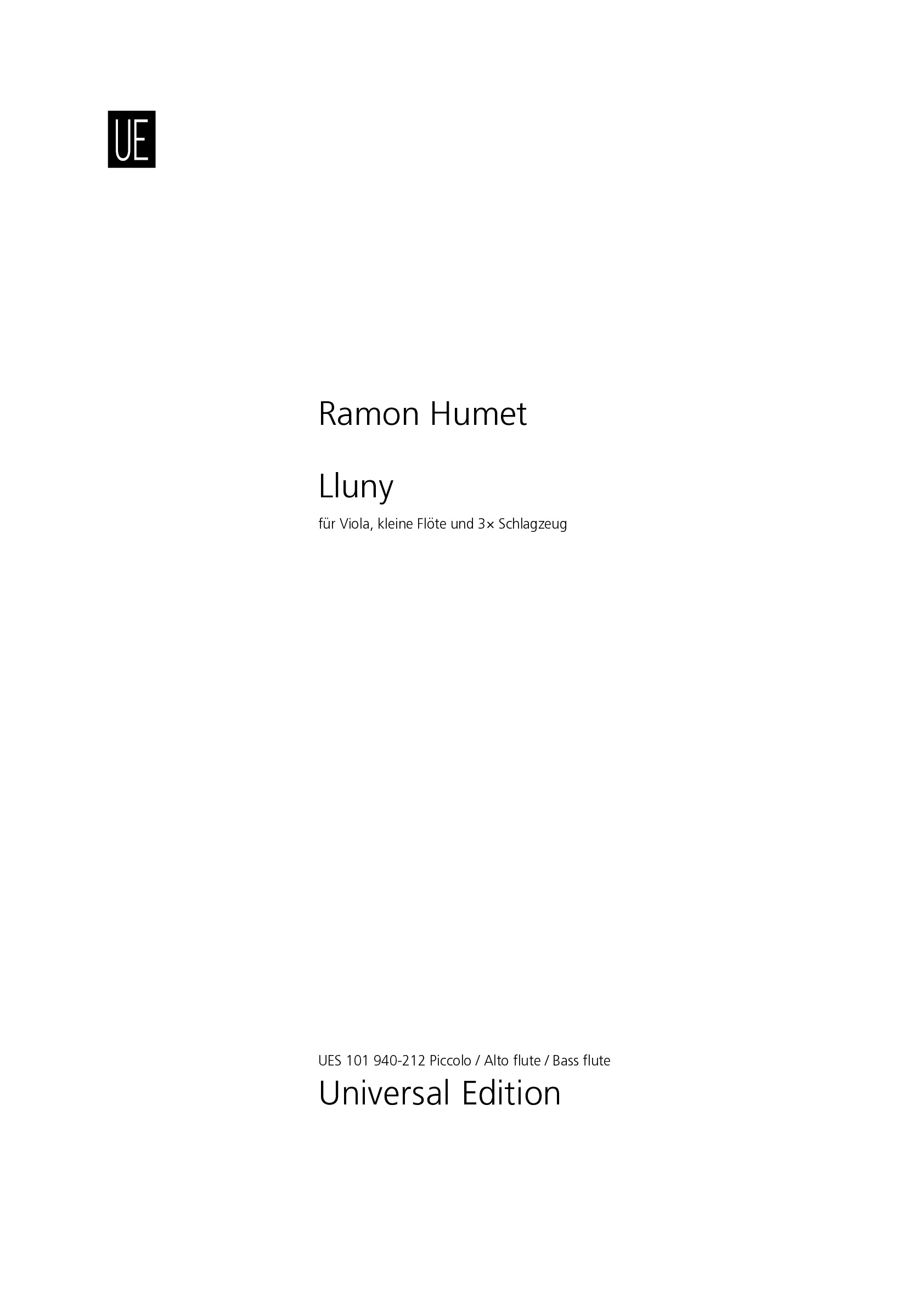

Ramon Humet
Lluny
Duration: 17'
Instrumentation details:
piccolo (+alto fl, bass fl)
1st percussion
2nd percussion
3rd percussion
viola
Lluny
Sample pages
Audio preview
Work introduction
Lluny (Afar) was commissioned by the Centro Nacional de Difusión Musical and it was premiered by the Ensemble Orquestra de Cadaqués under the direction of Ernest Martínez Izquierdo, on 14th March 2016 at the Auditorium 400 of the Museo Nacional Centro de Arte Reina Sofía, Madrid.
During the month of September 2015, I had the pleasure of spending ten days on a hermit retreat. I was surrounded by green oaks in a place where nature’s growth is splendid and generous. The hours dedicated to contemplating the wood turned increasingly, with the passing of time and the intensity of meditative activity, towards the ambient sounds and their lightness and distance.
This lightness is, also, an attribute of a particular, captivating image: the total calmness of leaves in a wood which, caressed by a gentle breeze, begin to oscillate, until they return, once more, to stillness.
The second attribute - distance - showed itself in the tolling of the bells of a sanctuary located quite far away, and in how the sounds were received: I perceived them as though they were there, physically, as if the bells were only a few metres from me; the colour of the sound dulled and with a cushioned dynamic - because of their absorption by the materials of the forest -, and with a particular resonance - given their reflection off the mountain side. All this makes me think of Henry David Thoreau’s perceptive comment when he includes distant sounds as an integral aspect of the universal lyre.
The instrumentation of the work includes flute - in all its mutations -, viola, and two percussionists, together with a third percussionist located behind the performance area, serving as a source of sound that acts from afar. The work is structured in eight movements which are linked without a resolution of continuity: I. Horizon, II. Wind, III. Bell, IV. Horizon, V. Breath, VI. Calmness, VII. Horizon, VIII. Thunder.
The first, third and seventh movements constitute a kind of sound backdrop - the framework where relations of proximity and distance are established; equally, movements III and VII provide a reencounter with the pulse. The second movement presents a continuum of white noise - fertile terrain for the birth of sounds. Various dynamic cycles lead to successive bursts of sound from the log drum behind the stage. The third movement recreates the homophonic tolling of a bell, in which, while making continual reference to the same sound object and the same harmony, each beat is differentiated from the others by the variations in its overtones, resonance and attack. At the end of the movement, the instruments fuse with the tubular bells situated behind the stage. The fifth movement, which evokes breathing, establishes a contrast between the in-breath -audible, present, dynamic and active -, and the out-breath - deep, low, passive, relaxed. The sixth movement recreates a state of immersion in interior calm, surrounded by notable activity of the superficial phenomena. The eighth movement presents a distant roll of thunder - log drum and bass drum situated behind the stage - which resounds in the lower registers of the instruments on stage, generating the paradox of thunder: distant sound focus and nearby resonances.
This work is joyfully dedicated to Joan Magrané, composer and friend.
Ramon Humet






